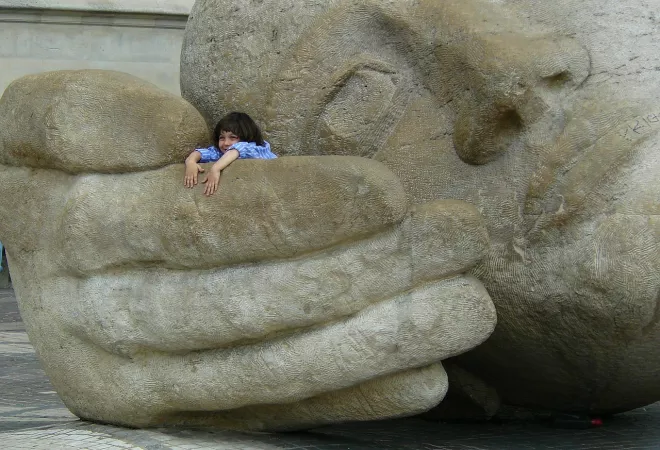
Dukes Nose
Lonavala . Maharashtra . India
Duration
1 to 2 Days
1 to 2 Days
Best time to visit
Oct-Feb
Oct-Feb
Theme
Hill Station, Adventure
Hill Station, Adventure
Dukes Nose Travel Guide
Dukes Nose, also known as Nagphani, is a prominent cliff in the Western Ghats of Maharashtra, India. This natural landmark got its name due to its resemblance to the nose of the Duke of Wellington. The region is rich in history, with the Maratha Empire and British colonial influences shaping its past. The geography of Dukes Nose offers breathtaking views of the surrounding valleys and lush greenery.Top Attractions in Dukes Nose
- Scenic Hiking Trails
- Paragliding Adventures
- Breathtaking Sunset Views
- Rock Climbing Experiences
- Lush Green Valleys
Dukes Nose is Famous for
Adventure enthusiasts flock to Dukes Nose for its thrilling paragliding experiences.Top Attractions in Dukes Nose
- Scenic Hiking Trails
- Paragliding Adventures
- Breathtaking Sunset Views
- Rock Climbing Experiences
- Lush Green Valleys
What's Great about Travelling to Dukes Nose?
- Perfect destination for adventure seekers
- Offers stunning panoramic views
- Great for nature lovers
What's Not So Great about Travelling to Dukes Nose?
- Not suitable for those afraid of heights
- Limited accommodation options
- Can be crowded during peak seasons
Travel Tips for Dukes Nose
- Check weather conditions before planning your trip
- Carry necessary hiking and safety gear
- Respect local customs and wildlife
Important Dukes Nose trip information
- Ideal Duration: A weekend getaway is ideal for exploring Dukes Nose.
- Best Time to Visit: The best time to visit is during the winter months of November to February.
- Nearby Airports and Railway Stations: The nearest airport is Pune Airport, and the closest railway station is Lonavala Railway Station.
FAQ's on Dukes Nose
Q1: What is the best time to visit Dukes Nose?
The best time to visit Dukes Nose is during the winter months from October to February when the weather is cool and pleasant. This period offers ideal conditions for outdoor activities like hiking and sightseeing. Avoid the monsoon season from June to September due to heavy rainfall, which can make the trails slippery and dangerous.
Q2: Do I need a visa to travel to Dukes Nose?
Travelers to Dukes Nose typically do not require a visa for short visits. However, it is advisable to check with the local embassy or consulate for the most up-to-date visa requirements, especially if you plan to stay for an extended period. Some nationalities may be exempt from visa requirements or eligible for visa-on-arrival facilities.
Q3: What are the must-visit attractions in Dukes Nose?
Dukes Nose offers stunning natural beauty and attractions such as the Dukes Nose viewpoint, Khandala Ghat, and Bhushi Dam. Visitors can also explore nearby hill stations like Lonavala and Khandala, known for their lush greenery and scenic landscapes. Don't miss out on experiencing the thrill of trekking along the rugged cliffs and enjoying panoramic views of the Western Ghats.
Q4: Is Dukes Nose a safe place to travel?
Dukes Nose is generally a safe destination for travelers. However, like any other place, it is essential to take precautions against petty theft and to be mindful of your surroundings, especially when exploring remote areas or hiking trails. It is advisable to travel in groups, follow local guidelines, and avoid isolated areas, particularly at night.
Q5: What is the local currency in Dukes Nose and can I use credit cards?
The local currency in Dukes Nose is the Indian Rupee (INR). While credit cards are accepted at most hotels, restaurants, and larger establishments, it is recommended to carry cash for smaller purchases and in remote areas where card facilities may be limited. ATMs are also available in towns like Lonavala for convenient cash withdrawals.
Q6: What is the local cuisine like in Dukes Nose?
The local cuisine in Dukes Nose offers a mix of Maharashtrian and Konkani flavors, with popular dishes like vada pav, pav bhaji, and bhel puri. Seafood lovers can indulge in fresh coastal delicacies like fish curry and prawns masala. Don't miss trying the famous Maharashtrian thali for a taste of traditional dishes. Vegetarian options are widely available, and travelers with dietary restrictions can find suitable choices in most restaurants.
Q7: What transportation options are available in Dukes Nose?
Transportation options in Dukes Nose include buses, taxis, and rental cars for getting around the region. Local buses are an economical way to travel between towns like Lonavala and Khandala. Taxis and auto-rickshaws are convenient for short distances and sightseeing tours. Car rentals are also available for those who prefer more flexibility in exploring the area. Additionally, private tour operators offer guided excursions to popular attractions in and around Dukes Nose.
Q8: Are there any cultural norms or etiquette I should be aware of when visiting Dukes Nose?
When visiting Dukes Nose, it is essential to respect local customs and traditions. Dress modestly, especially when visiting religious sites or rural areas. Removing footwear before entering temples or homes is a common practice. Greeting locals with a "Namaste" and showing courtesy in interactions is appreciated. Avoid public displays of affection, and be mindful of photography restrictions at certain locations. It is also customary to bargain at local markets but do so respectfully. By being culturally sensitive and observant, travelers can have a more enriching experience in Dukes Nose.
Q9: I am a travel agent. How can I buy travel leads of Dukes Nose?
Register yourself as a travel agent at agents.tripclap.com and then you can buy travel leads to Dukes Nose once your account is approved. For more details contact our support team at +91-8069186564 or support@tripclap.com
